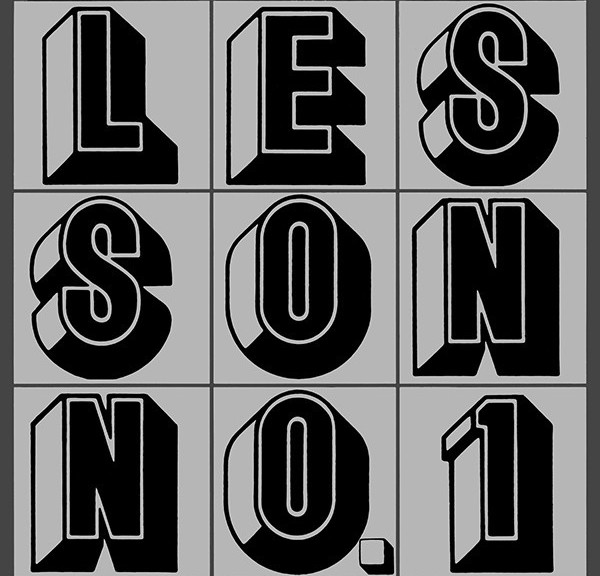Whenever I think about Sonic Youth (which is a lot, as you can probably tell) I can’t help but link it all back to Glenn Branca. When I was first introduced to Branca’s work I came to think that he is where Sonic Youth got all of their ideas from. In Branca’s symphonies appear the larger (much larger) versions of Sonic Youth’s descents into chaos. It’s not that just those parts recall one another, but the guitar tone in general, and the visceral, defiantly experimental energy all do as well.
I’m sure by now that the two are sick of being linked to one another, as both have gone in completely different directions; Branca’s language has drawn him to increasingly bold ideas of gargantuan scope, while Sonic Youth (before their dissolution), for the most part, went the “song” route.
But Branca’s work is not all captured in his symphonies. In 1980 he released his first solo work, “Lesson No. 1” that featured two tracks, that is one for each side. Side A consists of a single chord, gradually and continually growing, adding little bits and pieces while the static harmony remains. It’s similar to his later, larger, symphonic work, yet distilled to the basic essence. Minimalist music with distortion. It’s a mix of several conflicting ideas; meditation and tension, focused and loose, contemplative and aggressive, celebratory and intimidating. It’s all there, packed in to 8 intense minutes.
Something completely different is found on the B-side. The contemplation and focus derived from the steadily growing and singular harmony has given way to a jagged part structure, increased dissonance and pounding percussion. “Dissonance” is exactly what it says it is, wild and aggressive, grinding, dissonant. Where “Lesson No. 1” continually picked up the pace, growing to massive proportions, “Dissonance” chugs to a near halt, with the ominous bass and drums beating out “and-1, and-1, and-1” throughout. Melodies clash and ring, strings rattling against guitar necks, psychotic strumming on the high strings play against the low wobble and tenuous pitch of a 2nd guitar. Everything explodes in the end, and one can just picture various scattered bits of wood and metal where drums and guitars once were.
Thankfully all of this beautiful early (No) New York is being resurrected, and rightfully so. It’s really important that music like this, that was way ahead of its time in its brazen originality, gets another release. Though collecting old and rare records may be great for some, there are also those people that just want to have it for their own for the first time. People need to experience this music, no matter how they came to it, and now they can. And, of course, to bring everything back full circle to Sonic Youth, Lee Ranaldo and Thurston Moore were two of the guitarist used in the “bonus” (you can think of it as a bonus, but really it was originally a separate release entirely) track “Bad Smells,” another side-long expedition into the noisier side of things, though those noise filled moments only last so long before an awkward, stilted kind of groove begins to set in.
Superior Viaduct is re-releasing “Lesson No. 1” in an expanded edition, set to hit stores on February 18th. It’s currently available for pre-order from the label. You can hear “Lesson No. 1” on the pre-order page of Superior Viaduct. Give it a listen and then scoop up the vinyl.


